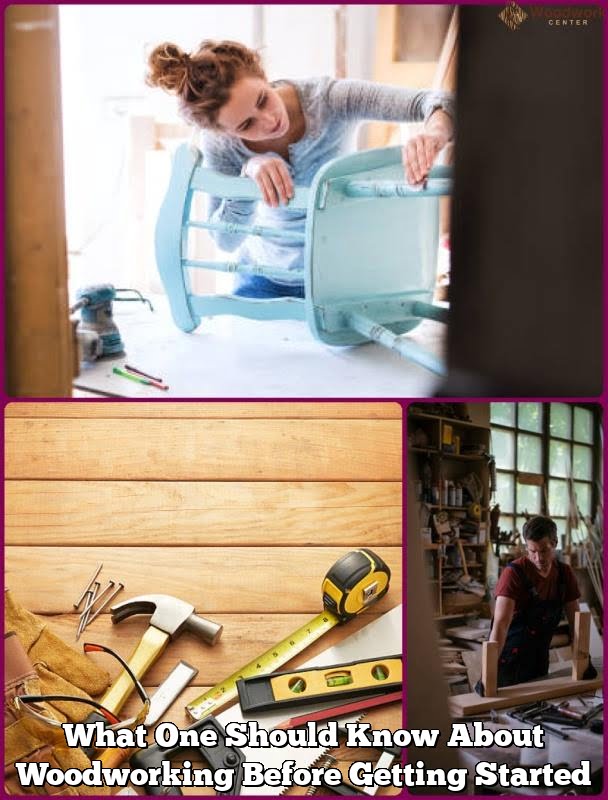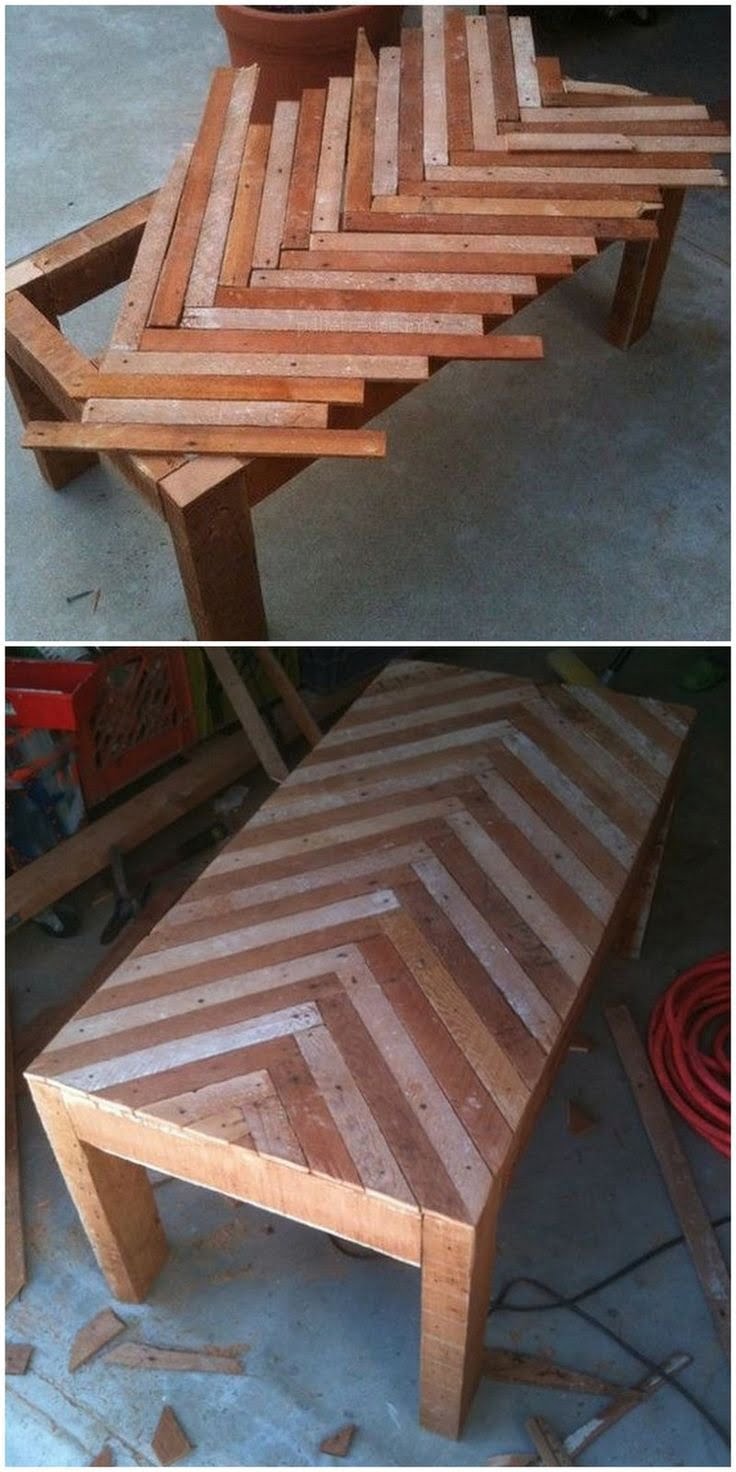Are you interested in beginning woodworking but not sure where to start? Whether you want to build a simple shelf, a coffee table, or even a small cabinet, starting with the basics is key to success. In this article, we will provide you with everything you need to know about beginning woodworking. From essential tools for beginners to understanding wood types and characteristics, basic techniques, safety tips, and building your first project, we have got you covered.
Woodworking is an ancient craft that involves shaping and creating objects from wood. It can be both a practical skill for building furniture and other household items, as well as an enjoyable hobby that allows for creativity and self-expression. Understanding the fundamentals of woodworking is crucial before diving into your first project.
As a beginner woodworker, having the right tools at your disposal is essential for success. The right tools not only make your projects easier but also safer. We will guide you through the essential tools every beginner woodworker should have in their toolkit, along with tips on how to use them effectively. So, if you’re ready to embark on your woodworking journey, let’s get started.
Essential Tools for Beginners
For those who are new to the craft of woodworking, understanding the essential tools for beginners is crucial. Having the right tools can make all the difference in the success of your projects. There are a variety of tools that are necessary for basic woodworking projects, and it’s important to invest in good quality tools that will last a long time.
One of the most essential tools for beginners is a good quality tape measure. Accurate measurements are key in woodworking, so having a reliable tape measure is crucial. Other basic hand tools include a hammer, chisels, hand saws, and screwdrivers. Power tools such as a cordless drill, circular saw, and orbital sander are also important for more efficient work.
It’s also important to consider safety when using these tools. Always wear protective gear such as safety goggles and ear protection when working with power tools. Proper storage and maintenance of your tools is also important to ensure their longevity and performance. With the right set of essential tools, beginners can start their woodworking journey on the right foot.
| Tool | Description |
|---|---|
| Tape Measure | Used for taking accurate measurements |
| Circular Saw | Power tool used for making straight cuts in wood |
| Cordless Drill | Power tool used for drilling holes and driving screws |
| Safety Goggles | Protective eyewear to prevent eye injuries from wood chips or debris while working |
Understanding Wood
Woodworking requires a deep understanding of different types of wood, their grain patterns, and characteristics. For beginners, it can be overwhelming to navigate through the variety of wood options available for their projects. Whether you’re looking to create furniture, decor pieces, or other woodworking projects, knowing the basics of wood is essential.
Types of Wood
There are two main categories of wood: hardwood and softwood. Hardwoods come from deciduous trees and are known for their durability and strength. Examples of hardwoods include oak, maple, cherry, and walnut. On the other hand, softwoods come from evergreen trees and are generally less dense than hardwoods. Pine, cedar, spruce, and fir are common types of softwood used in woodworking.
Grain Patterns
Understanding the grain patterns of wood is crucial for woodworking projects. The grain refers to the texture or pattern seen in a cut piece of wood. It can be straight, wavy, curly or have other patterns. Each type of grain offers unique characteristics that affect how the wood behaves when cut or shaped.
Characteristics to Consider
When choosing wood for a project, considering its color, hardness, workability, and affordability is important. Some woods may be more suitable for specific projects based on their characteristics. For instance, a dense hardwood like oak may be ideal for furniture making due to its strength and durability, while a softer wood like pine might be better suited for decorative items or smaller projects.
Understanding these factors will help beginner woodworkers make informed decisions when selecting the right type of wood for their desired projects.
Safety First
Woodworking can be an incredibly rewarding hobby, but safety should always be the top priority, especially for beginners. One of the first things to know about beginning woodworking is the importance of protecting yourself from potential hazards in the workshop. Always wear appropriate safety gear, including safety goggles, ear protection, and a dust mask to protect your eyes, ears, and respiratory system from sawdust and flying wood particles.
In addition to personal protective equipment, it’s crucial to have a clean and organized workspace. Cluttered work areas can lead to accidents and injuries. Keep your tools properly maintained and use them as intended. When using power tools, make sure they are in good working condition and that you’re following all safety precautions recommended by the manufacturer. Also, always unplug power tools before making any adjustments or changing blades or bits.
Furthermore, it’s important to be mindful of your body positioning when working with hand tools or power tools. Keep your hands at a safe distance from cutting edges or moving parts, and take your time with each task rather than rushing through it. Taking these precautions will help ensure a safe and enjoyable woodworking experience for beginners.
| Tool | Safety Precautions |
|---|---|
| Table Saw | Use a push stick to keep hands away from blade; wear eye protection |
| Power Drill | Wear ear protection; hold the tool firmly with both hands while drilling |
| Chisel | Keep fingers behind the cutting edge; use a workbench vice for stability |
Basic Woodworking Techniques
When beginning woodworking, it’s important to start with the basics of woodworking techniques. Understanding cutting, joinery, and finishing are essential skills for any beginner woodworker. Here are some key points to know about basic woodworking techniques:
- Cutting: The first step in any woodworking project is cutting the wood to the desired size and shape. Essential tools for cutting include a saw, such as a hand saw or circular saw, as well as measuring tools like a tape measure or combination square. It’s important to practice safe cutting techniques and always wear protective gear such as safety goggles and gloves.
- Joinery: Joinery refers to the method of connecting wooden pieces together to create a solid and stable structure. Common joinery techniques for beginners include butt joints, pocket hole joinery, and miter joints. Mastering these basic joinery techniques will lay the foundation for more advanced woodworking projects in the future.
- Finishing: Once the wood pieces are cut and joined together, it’s time to apply a finish to enhance the appearance and protect the wood. Finishing techniques can include staining, painting, or applying a clear coat of polyurethane. Understanding different finishing methods and experimenting with various finishes will help beginners develop their own personal style.
By familiarizing yourself with basic woodworking techniques such as cutting, joinery, and finishing, you’ll be well on your way to creating your first woodworking projects with confidence.
Remember that practice makes perfect when it comes to mastering these skills – don’t be afraid to make mistakes along the way as they are all part of the learning process. Learning from experienced woodworkers through books, online communities, and workshops can also provide valuable insights and tips as you continue your journey in woodworking.
Choosing the Right Wood for Your Projects
When it comes to beginning woodworking, choosing the right type of wood for your projects is crucial. The type of wood you use can greatly affect the final outcome of your project, so it’s important to understand the different options available to you. Here are some tips and recommendations for choosing the right wood for your woodworking projects:
- Consider the characteristics: Different types of wood have different characteristics that make them suitable for specific projects. For example, hardwoods like oak and maple are great choices for furniture making due to their durability and strength, while softwoods like pine and cedar are often used for outdoor projects due to their natural resistance to decay.
- Think about the grain: The grain pattern of wood can also impact the overall look of your project. Straight grains are often preferred for a clean and classic look, while more irregular grains can add character and visual interest to a piece.
- Understand how different woods work: Some woods are easier to work with than others. For beginners, it’s often best to start with woods that are forgiving and easy to cut and shape, such as pine or poplar.
By considering these factors when choosing wood for your projects, you can ensure that you’re using the best materials for your skill level and desired outcome. Additionally, don’t be afraid to ask for advice from experienced woodworkers or professionals at your local lumberyard – they can provide valuable insight into which type of wood is best suited for your specific project.
Remember that selecting the right type of wood is just as important as mastering woodworking techniques. With the proper knowledge and research, you’ll be well on your way to creating beautiful and long-lasting woodworking projects.
Building Your First Project
Building a project from start to finish is an exciting and rewarding part of beginning woodworking. Whether it’s a simple shelf, a basic table, or a small piece of furniture, creating something with your own hands can be incredibly fulfilling. In this section, we’ll provide step-by-step instructions for a beginner-friendly project that will help you apply the basic woodworking techniques you’ve learned.
Gathering Materials and Tools
The first step in building your first woodworking project is gathering all the necessary materials and tools. For our beginner-friendly project, let’s consider building a simple wooden shelf. You will need wood boards cut to the desired dimensions for the shelf, sandpaper for smoothing any rough edges, wood glue, clamps to hold the pieces together while they dry, and a tape measure and saw for cutting the wood.
Assembling the Project
Once you have all your materials and tools ready, it’s time to start assembling your project. Begin by laying out the pieces of wood according to your design and double-checking all measurements before making any cuts or attaching any pieces. Apply wood glue along the edges that will be joined together and use clamps to hold them firmly in place while they dry. Once the glue has set, use sandpaper to smooth any rough edges.
Finishing Touches
After the main structure of your project has been assembled and dried, it’s time for the finishing touches. Sand down any remaining rough spots on the wood and apply a finish of your choice – whether it’s painting, staining, or sealing the wood – to protect it from wear and tear. This is also an opportunity to add any decorative elements or personal touches to your project before it’s complete.
These step-by-step instructions for our beginner-friendly woodworking project should help you gain confidence as you work on more advanced projects in the future. Remember that practice makes perfect, so don’t be discouraged if things don’t go perfectly on your first try – every mistake is an opportunity to learn and improve.
Resources for Beginner Woodworkers
As a beginner woodworker, it’s important to seek out resources that can help you improve your skills and expand your knowledge of the craft. Whether you prefer learning through books, online communities, or workshops, there are plenty of valuable resources available to assist you on your woodworking journey.
Books can be an invaluable resource for beginner woodworkers, providing in-depth information on everything from tool usage and woodworking techniques to project ideas and inspiration. Look for well-reviewed books written by experienced woodworkers that cover a wide range of topics relevant to beginners. Some popular titles include “The Complete Manual of Woodworking” by Albert Jackson and “The New Traditional Woodworker” by Jim Tolpin.
In addition to books, online communities provide a platform for beginners to connect with experienced woodworkers and seek advice, share ideas, and learn from others in the woodworking community. Websites like Reddit’s woodworking subreddit and woodworking forums like Sawdust Zone offer a wealth of information and support for those just starting out in the craft.
If you prefer hands-on learning and the opportunity to work alongside experienced professionals, consider enrolling in woodworking workshops or classes. Many local woodworking stores offer classes for beginners that cover basic techniques, safety guidelines, and project building. These workshops can provide valuable hands-on experience and personalized instruction as you develop your skills in woodworking.
By taking advantage of these resources – whether it be through books, online communities, or workshops – beginner woodworkers can accelerate their learning process and gain the confidence they need to tackle more advanced projects in the future.
Common Mistakes to Avoid
In conclusion, beginning woodworking can be a rewarding and fulfilling hobby or even a potential career path for those with a passion for crafting with wood. By understanding the essential tools, different wood types, safety precautions, basic techniques, and how to choose the right wood for projects, beginners can feel more confident as they embark on their woodworking journey.
It’s crucial to prioritize safety in woodworking, as power tools and sharp equipment can pose serious risks if not used properly. Additionally, gaining an understanding of different wood characteristics such as grain patterns and density will greatly benefit beginners in selecting the most suitable materials for their projects.
Lastly, seeking out resources such as books, online communities, and workshops can provide valuable guidance and support for those new to woodworking. Learning from experienced woodworkers and being aware of common mistakes to avoid will help beginners navigate potential challenges and work towards success in their craft. With dedication, practice, and continuous learning, beginning woodworkers can develop their skills and create beautiful projects they can be proud of.
Frequently Asked Questions
Can I Teach Myself Woodworking?
Yes, you can definitely teach yourself woodworking. There are countless resources available online, in books, and through woodworking communities that can help you learn the necessary skills and techniques. Starting with small projects and gradually working your way up to more complex ones is a great way to build your skills and confidence.
How Do I Get Started With Woodworking?
Getting started with woodworking involves first familiarizing yourself with the basic tools and their uses. It’s important to learn about different types of wood, their properties, and how to properly measure and cut them. Taking a beginner’s woodworking class or finding a mentor can also be incredibly helpful in getting started on the right foot.
How Do I Start Woodworking With No Experience?
Starting woodworking with no experience may seem daunting, but it’s entirely possible with the right approach. Begin by investing in some basic tools like a saw, hammer, chisel, and measuring tape.
Then start by practicing simple tasks like measuring and cutting scrap wood to get a feel for the tools before moving on to actual projects. Additionally, seeking out online tutorials and instructional videos can provide valuable guidance for beginners.

Hi everyone! I’m a woodworker and blogger, and this is my woodworking blog. In my blog, I share tips and tricks for woodworkers of all skill levels, as well as project ideas that you can try yourself.





